We set off towards Villmayor de Montjardin to a forecast of 16°C on a generally good track with some fairly steep hills (some refer to these as ‘undulations’, I prefer the term ‘hill’).
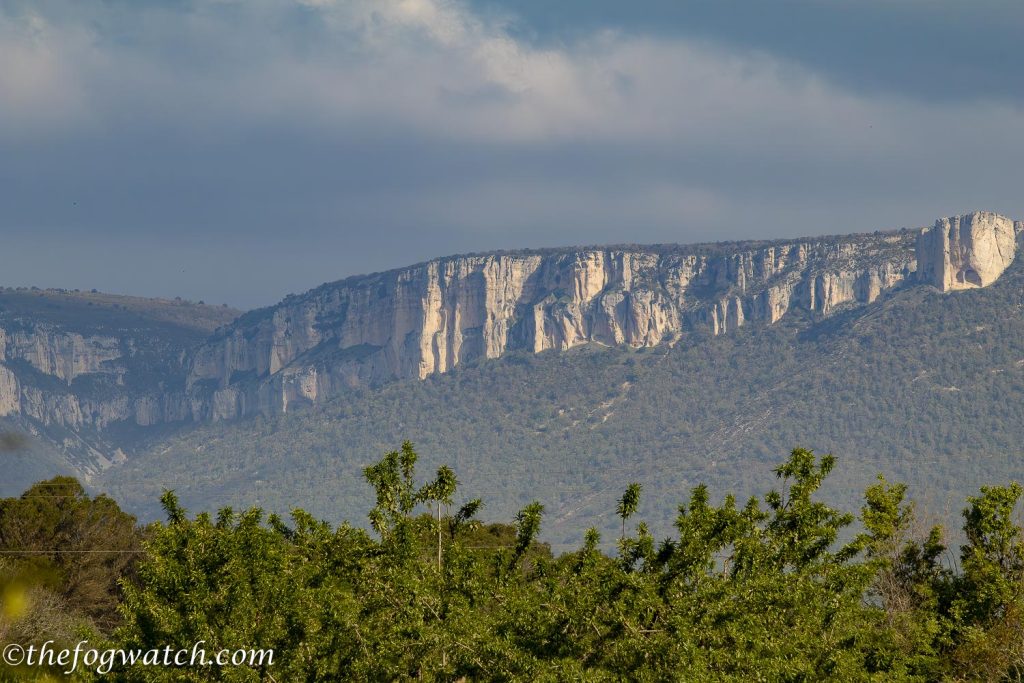
There were some great views across the valley, and soon we were approaching the 100km mark – our first 100km completed. It is time for breakfast in Ayegui. There’s nothing quite like good hearty fried eggs and bacon washed down with a nice pot of tea.
At times the path resembled a leafy tunnel as the shrubs on either side met overhead. It looked like something out of Tolkein’s Lord of the Rings. I sometimes wonder if he had walked the Camino at some point in his life.
A short walk down the road and we turned, following the arrows towards two famous landmarks. The first, at the base of the hill, is the blacksmith. I stopped and bought my third hand-made metal shell from him (one for each Camino).
This time I was able to explain in my broken Spanish that this is our third Camino. And I showed him the other two shells I had purchased on my previous Caminos. He smiled broadly and said ‘Bravo!’ and welcomed me to his forge. I asked if I could take some photos and he readily agreed. He is a very skilled craftsman and his larger work from gates to lamps was exquisite. His stamp is the one that says ‘100 km’ marking that distance from Roncesvalles.
Then onwards up the hill to find the free wine fountain. And there it was. I waited while a pilgrim filled his litre water bottle, before stepping forward for a shell-full to sip the wine.
The tank behind the tap is filled with just 100 litres a day. So if you fill a litre bottle, it will quickly run out for other pilgrims. Just two bus-loads of pilgrim tourists could drain it for the day. The tradition is to taste a little from your shell. I raised this with the guy filling his water bottle — then felt bad that I might have spoiled a Camino moment for him. Many people don’t read the sign that mentions how little is provided each day. I also didn’t mention the 24-hour webcam that broadcasts everyone that stops there :-).
While the fountain is supplied by what is now a privately owned winery, the tradition dates back a long way. The winery was once part of the Irache monastery, established in the C11th — the wine was provided as a tonic for weary pilgrims as part of the monastery’s hospitality. The present Bodegas de Irache (Irache winery) was established in 1891. The fountain that dispenses free wine and water (two taps) was built in 1991 by the San Esteban family who are the third owners of the winery and vineyard. They also offer tastings of their vintages. Navarra is one of the two best wine-growing regions in northern Spain and well worth a stop in at their cellars.
A little further up the hill, we visited the monastery church — which is also worth a visit, and a friendly priest stamped our credential. The Benedictines founded the monastery in the C8th. It is consecrated to Santa Maria de Irache. It appears in written sources as early as 958 CE, and it received a donation from King Sancho Garcia I in the C10th. Always a hospital for pilgrims, it expanded in the C16th to include a college that became Navarra’s first university, which opened in 1615 and closed in 1824.
The Benedictines live according to the Rule of St Benedict. This established the authority (and responsibility) of the abbot, and was based on the principle of ‘all things in moderation’, and emphasised the connection between monastic life and the community it serves. By dispensing wine to the pilgrims as a tonic, they were connecting with the pilgrims and the pilgrim culture. Of course, it also advertises their winery and thus it also generates revenue for the community.
At the top of the hill, there are two arrows, one pointing straight on up, the other takes a right-hand turn. Both are part of the Camino, but the one to the right is the main path, the other a more scenic and quieter route. We took the right-hand turn to stay on the main path towards Azqueta.
Kites circled overhead looking for any small animals we might have disturbed, (or perhaps a weary pilgrim that had fallen by the wayside), and everywhere the birdsongs of Spring provided a delightful and varied soundscape. As I walked I picked small sprigs of wild anise or fennel – it tasted of licorice and really freshens the mouth.
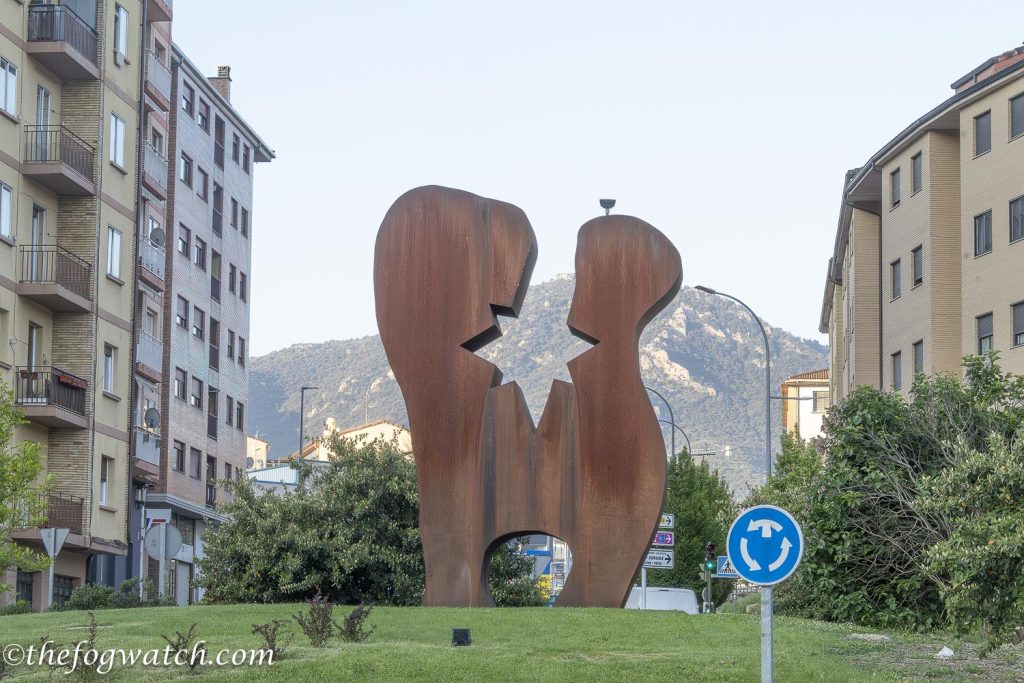
This path took us to Azqueta where we stopped in for a refreshing cup of tea and a welcome break, before heading out and onwards. It was a fairly steep climb to Villamayor de Montjardin.
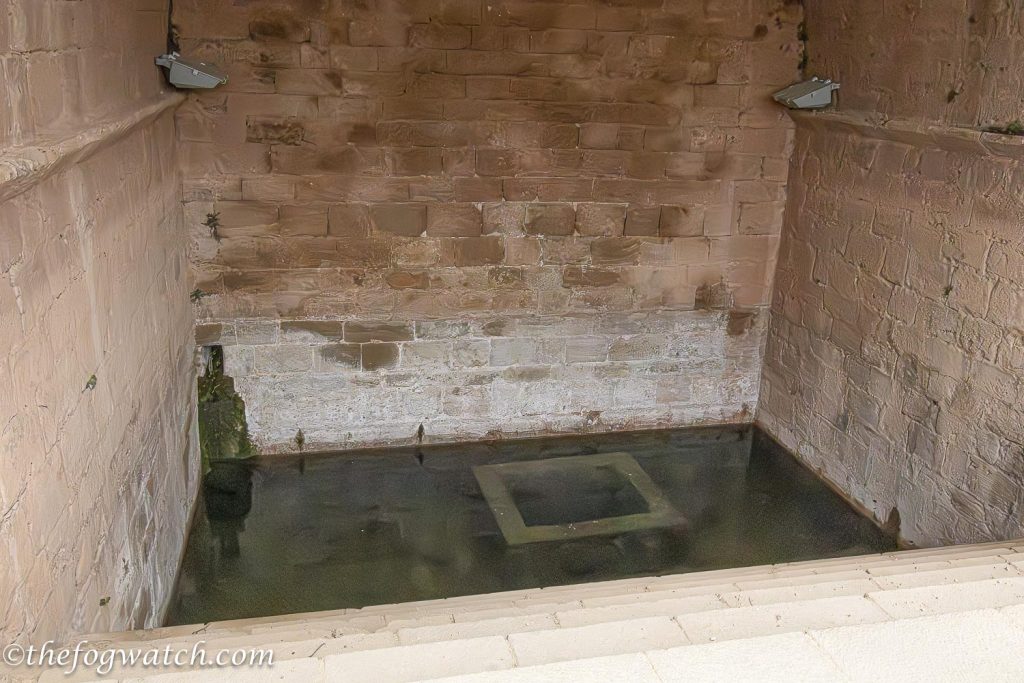
On the outskirts, there is the Fuente de los Moros — a twin-arched gothic fountain fed by a local spring. It was once used as a washhouse, but today you will sometimes find pilgrims cooling their feet after a long hot climb. The community built the structure around 1200 CE as a medieval bathhouse for pilgrims on the road to Santiago. The Principality of Viana restored it in 1991. So despite its name, the Moors had nothing to do with its construction.
The walk into Villamayor de Montjardin is very picturesque. The church slowly reveals itself among the wildflowers on your approach to the town.
As you might guess from the name, the place was possibly established by French pilgrim settlers. The castle itself rests on the ‘garden mountain’ or montjardin. Some pilgrims make the climb to the C10th Montjardin castle. I didn’t climb, but chose instead to admire it from the comfort of my camera’s zoom lens. It is still an impressive edifice sitting atop the hill overlooking the surrounding farmlands. The castle of San Esteban de Deyo has been rebuilt many times — its base is in fact of Roman origin. It was supposedly the last major stronghold of the Banu Qasi Moslems in this region until King Sancho Garcia captured it in 914 CE.
There are two legends about the capture of the Montjardin castle. The first is that when King Sancho Garcia I was preparing to attack the Moors on Montjardin, a goatherd saw a goat seemingly frozen in place. He used his sling to scare off the circling vultures and went to investigate. He found there a cross with one of his stones embedded in its arm. Remorseful, he swore he would rather have lost the use of his arm than have done damage to the cross. And with that, his arm became immobile.
Such legends often have other meanings embedded within. Goats often have mystical symbolism attached, such as the scapegoat that carries away the ill will of the community. Perhaps it is a message that the church is stronger if you don’t throw stones (or cast aspersions) at it. Looked at another way, if you weaken the community, then the community will not support you and you will thus be weakened.
Pseudo Turpin, author of the Codex Calixtinus, suggests that Charlemagne took the Montjardin castle from a Navarran prince named Furré. Charlemagne had marched there from Puente la Reina and took the castle before heading off to fight Ferragut in Nájera. The legend goes that before the battle, Charlemagne asked God to indicate which of his soldiers would die the next day. When the troops put on their armor, he saw that 150 men had glowing crosses on their backs. Charlemagne ordered them to stay behind to guard the camp to protect them from their fate. But on returning from battle, he found that they had all mysteriously died.
Perhaps it was a lesson that we cannot cheat death if our time has come. There are some things we can’t talk our way out of.
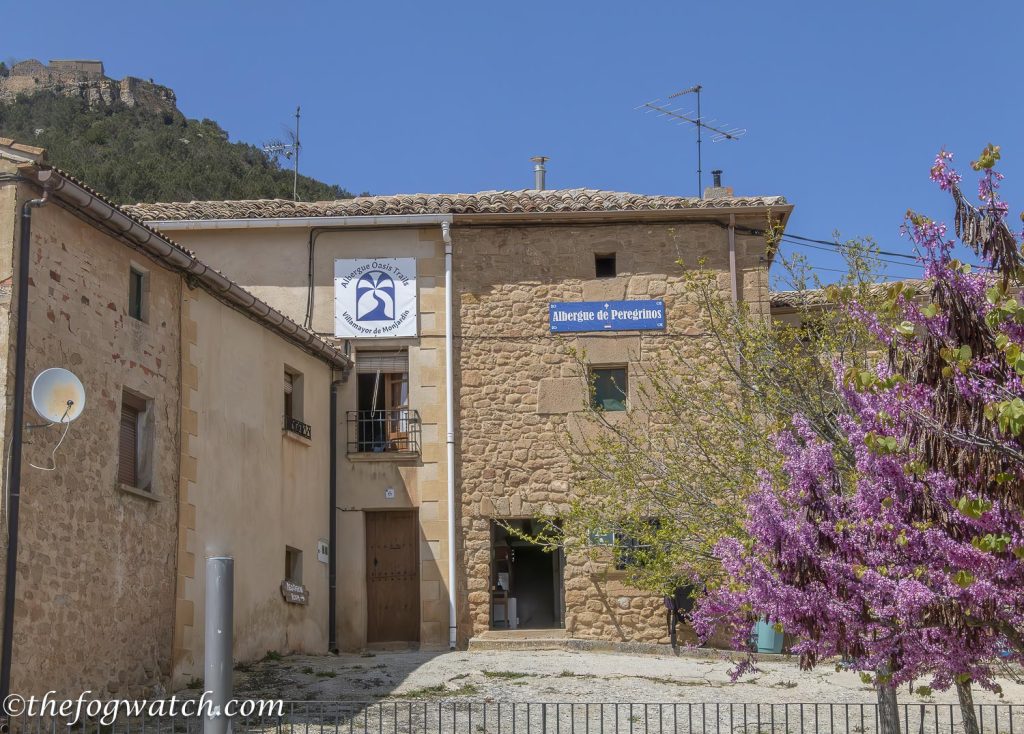
We arrived a bit early to check in to our Albergue. So we found the bar next door and ordered a hearty lunch with a generous glass or two of wine. Looking out over the C12th church in Villamayor de Montjardin, we thought it would be good to draw. But the absence of shade, and the fact it was closed meant we couldn’t find a comfortable spot.
We checked into the Albergue’s only private room. Then we showered, washed our clothes, changed into tomorrow’s clothes, and went downstairs to find a washing line. They had a motorised spin dryer, which we used before hanging out the clothes.
Then we sat with the hospitalero who asked how we were going. Sharon mentioned that her knees were giving her some problems, whereupon the hospitalero asked if he could pray over her knees — definitely a Camino first for us! It turned out that a Baptist group was running the Oasis Trails Albergue. They invited us to the communal dinner and then if we chose we could attend the Jesus meditation.
Dinner was well provisioned and three local ‘friends’ of the hospitalero joined us for dinner — one to each table. Quite skilfully they kept guiding the conversation towards their conversion stories, how they found Jesus, and made several remarks disparaging the Catholic church — indeed they were celebrating the success they had been having at driving Catholics out of Villamayor de Montjardin. As long-lapsed Catholics, we found this a bit disconcerting. Especially so, given the origins of the Camino itself within the Catholic tradition. They were certainly friendly enough, and I would stay there again. But we avoided getting into sectarian religious discussions with them.
After dinner, we went outside, collected our now dry washing and I took some sunset photos over the domed and lanterned spire of the church. By now we were tired and decided to retire early with all jobs done, knees prayed-for and as we packed, we reflected on the unusual evening.
And so to sleep.

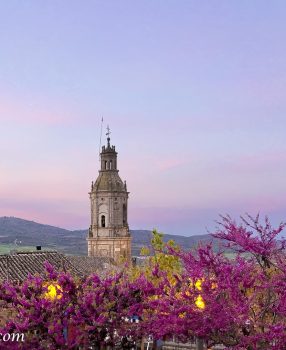
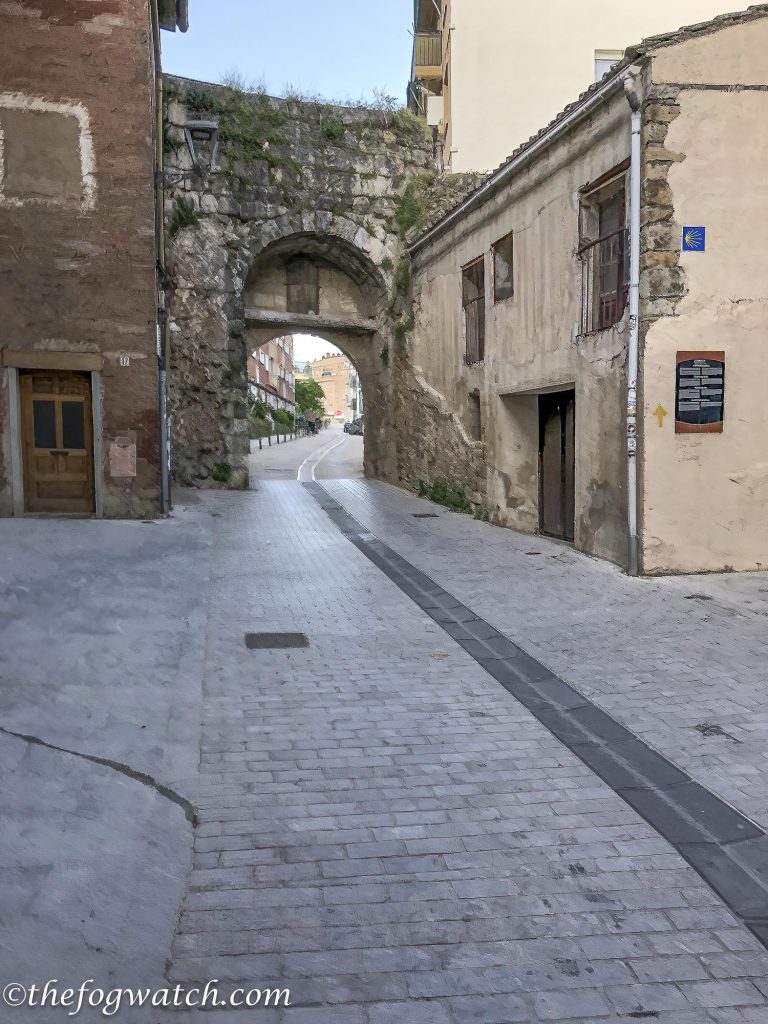
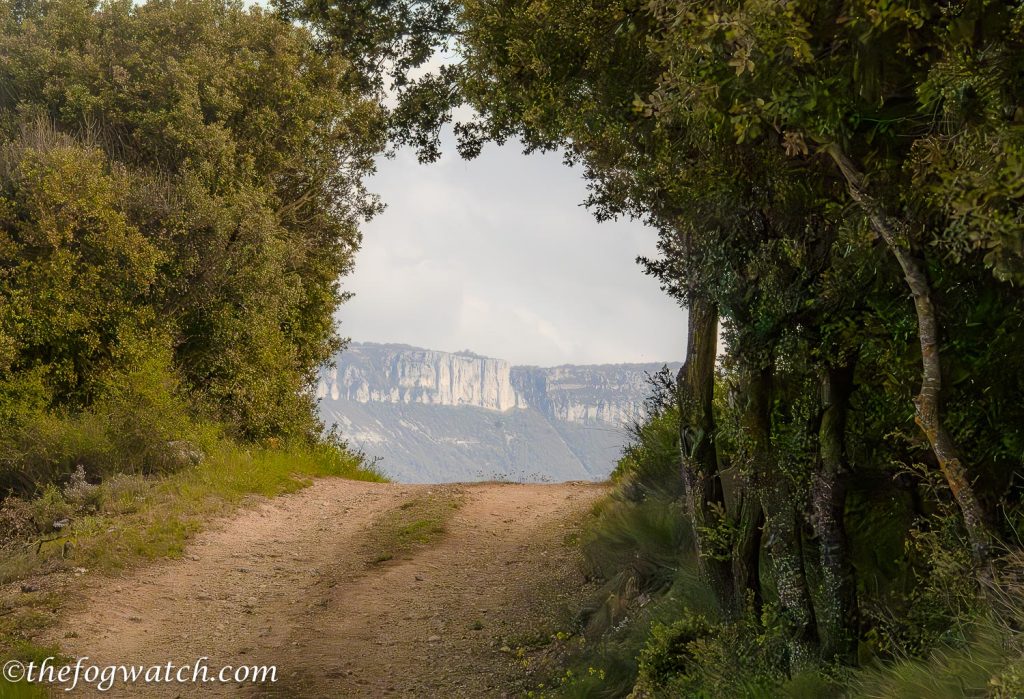
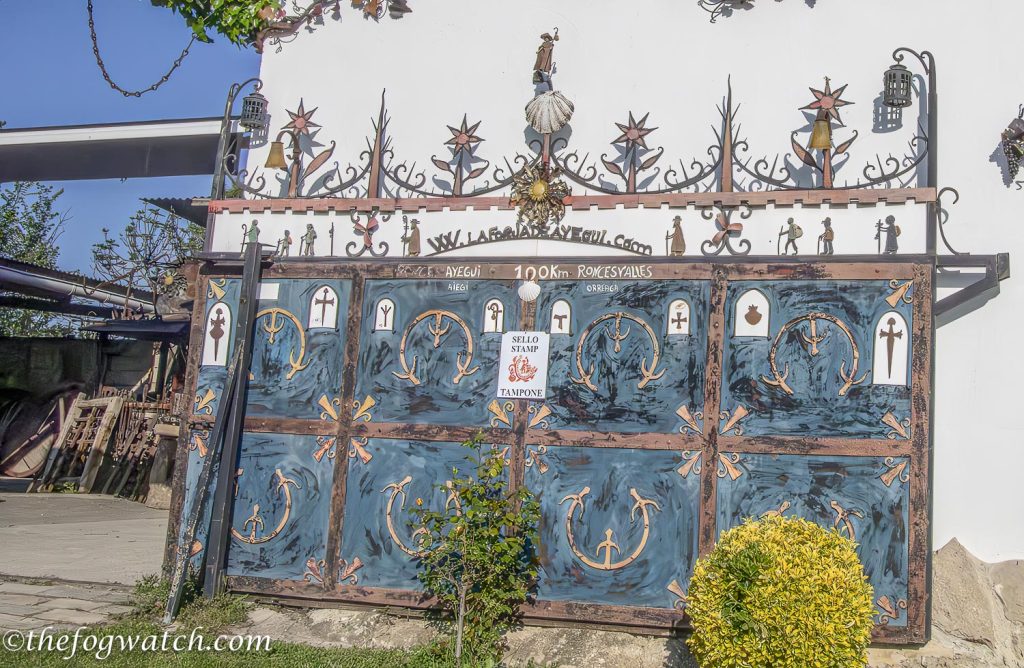
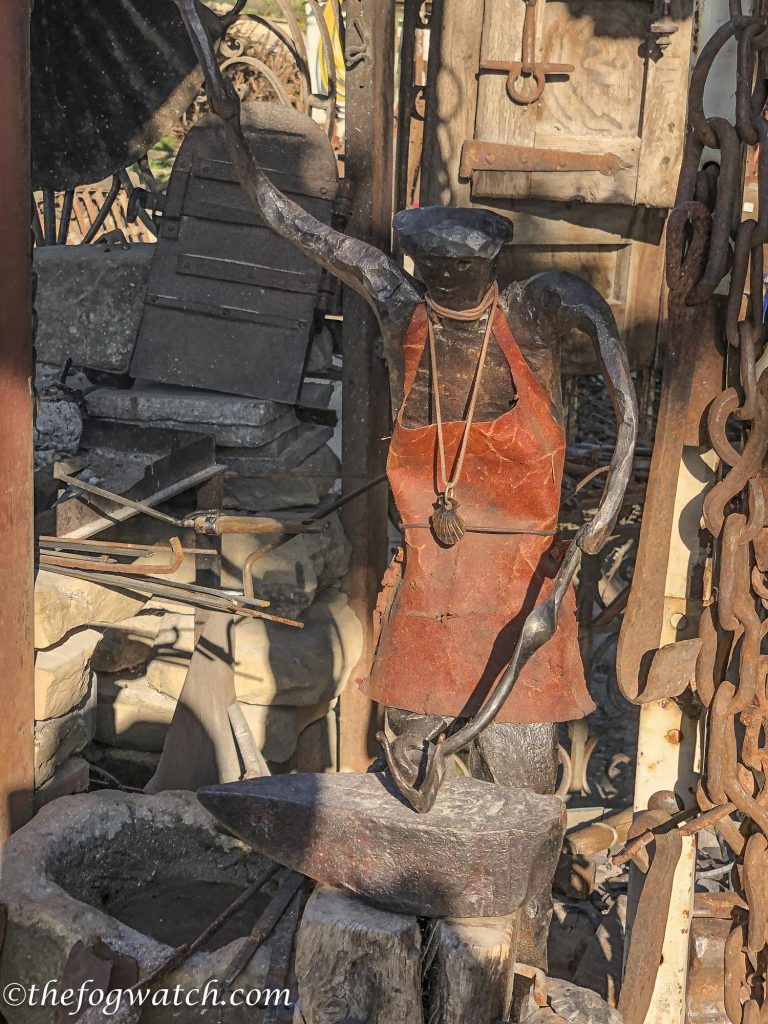
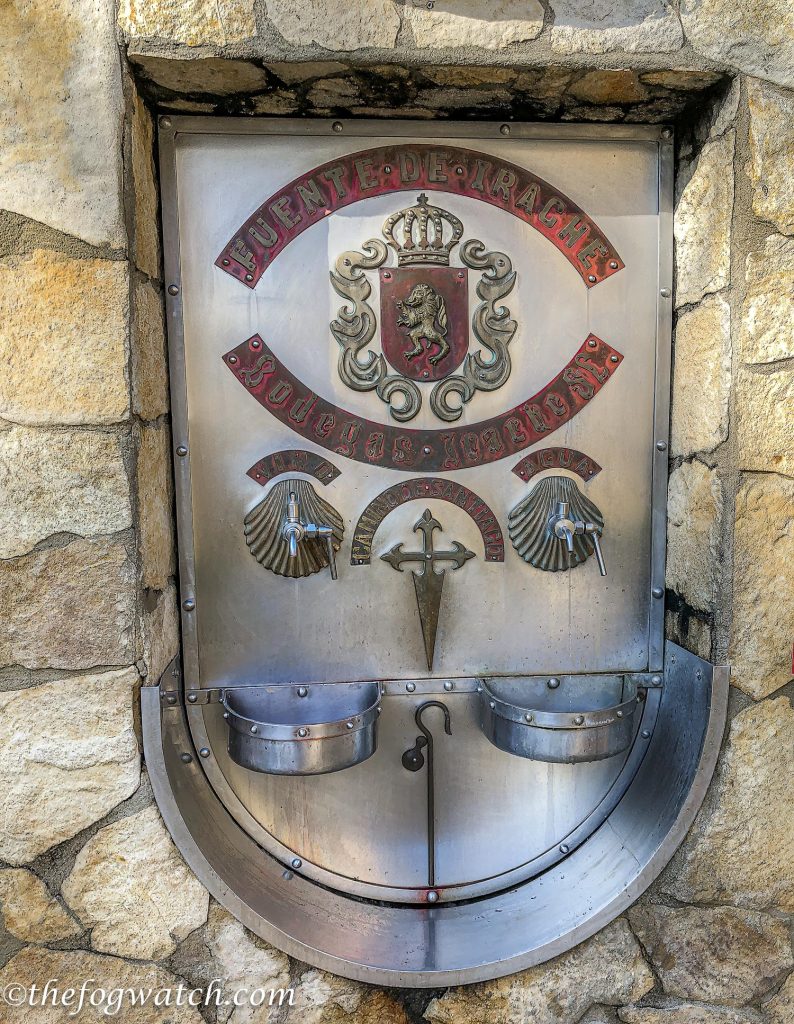
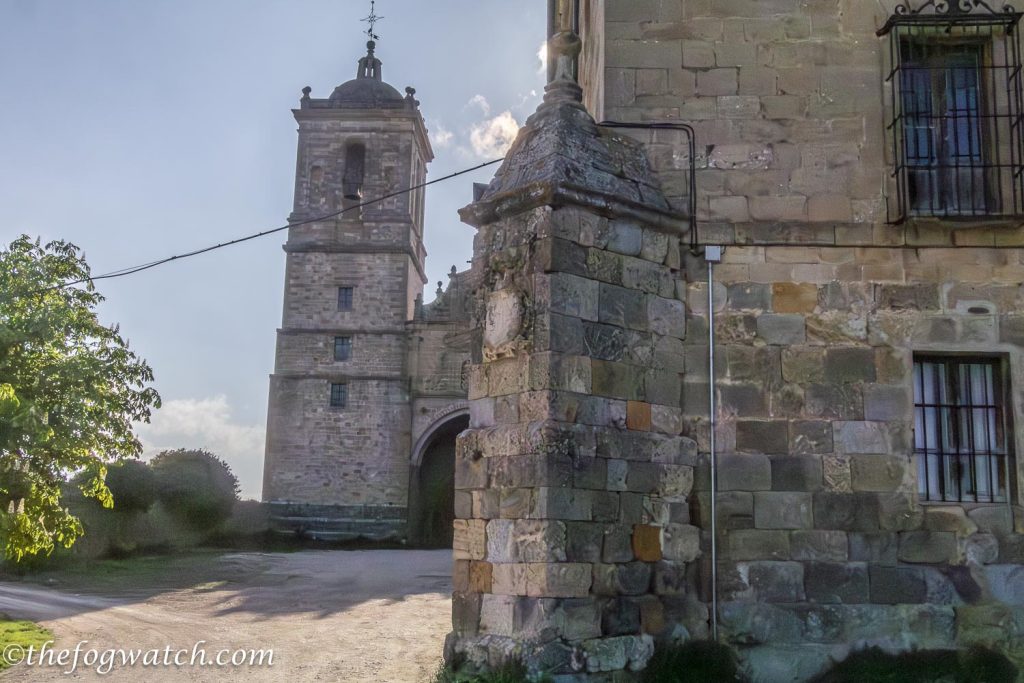
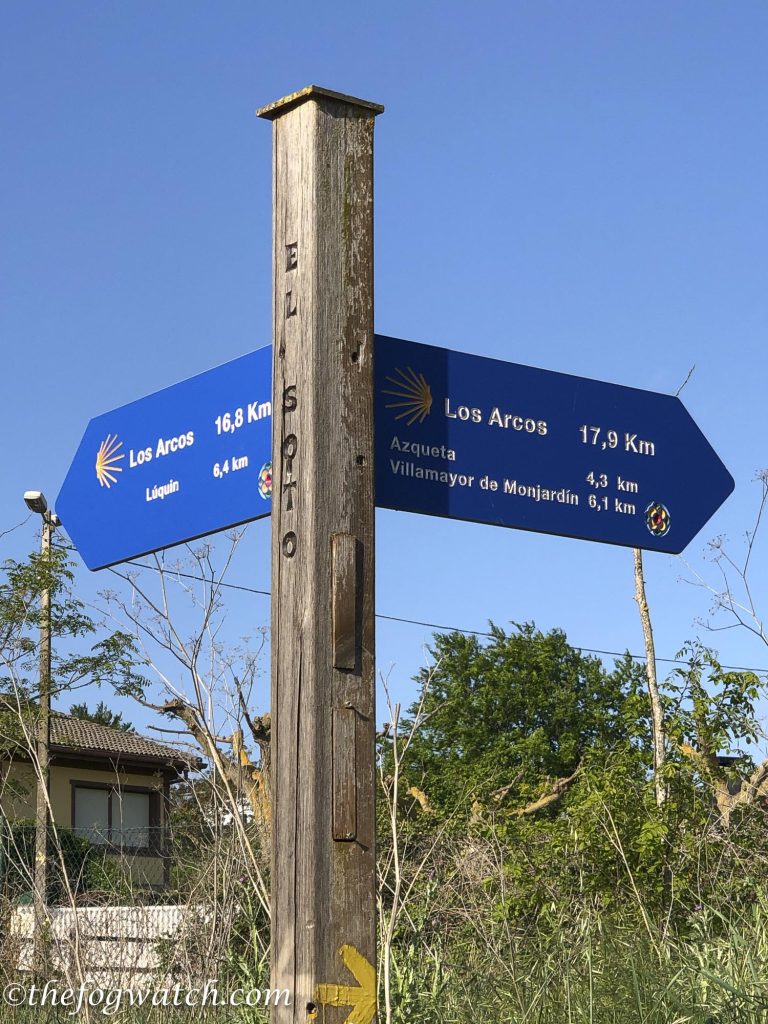
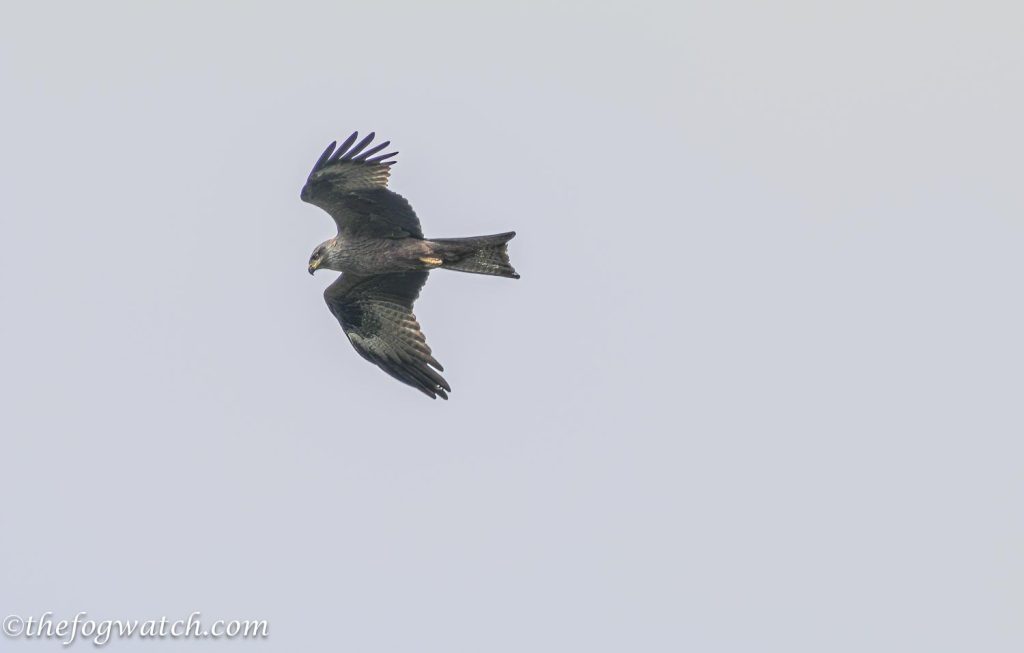
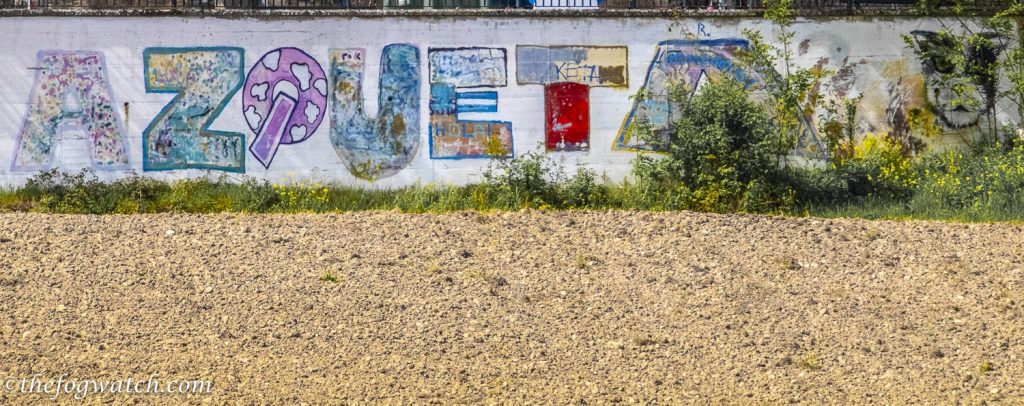
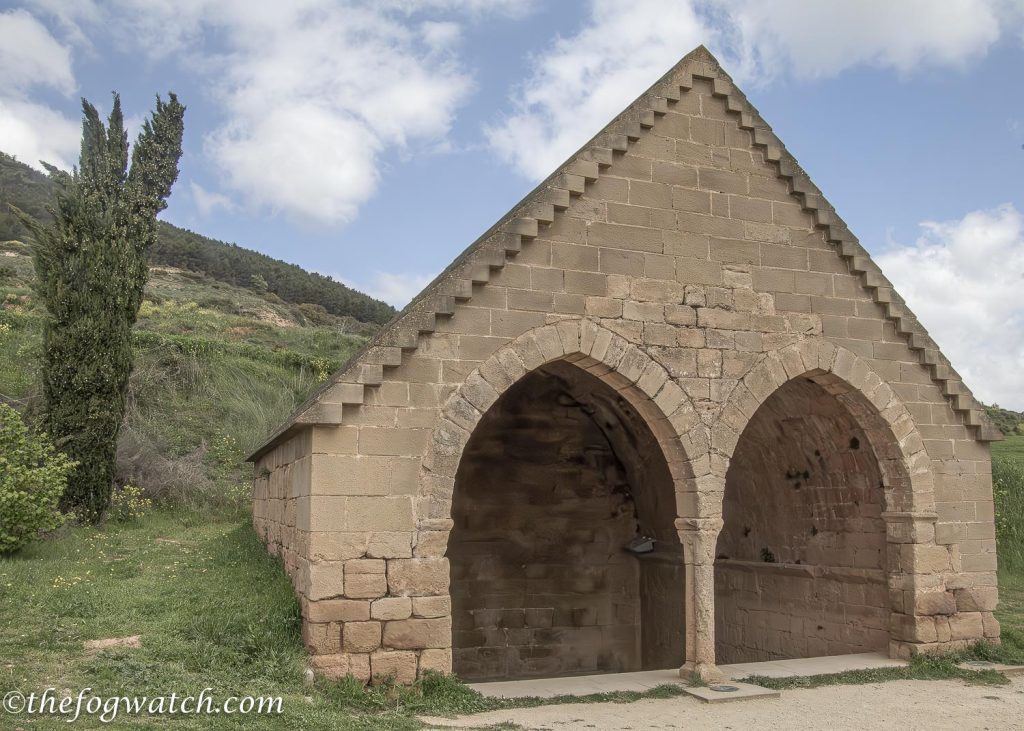
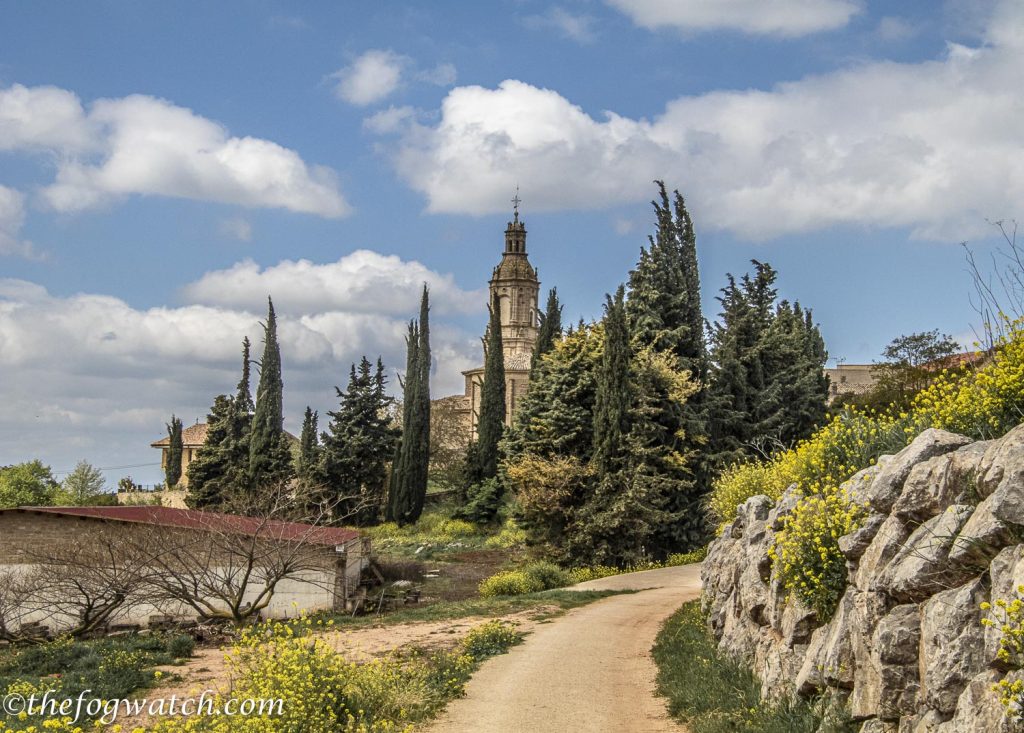
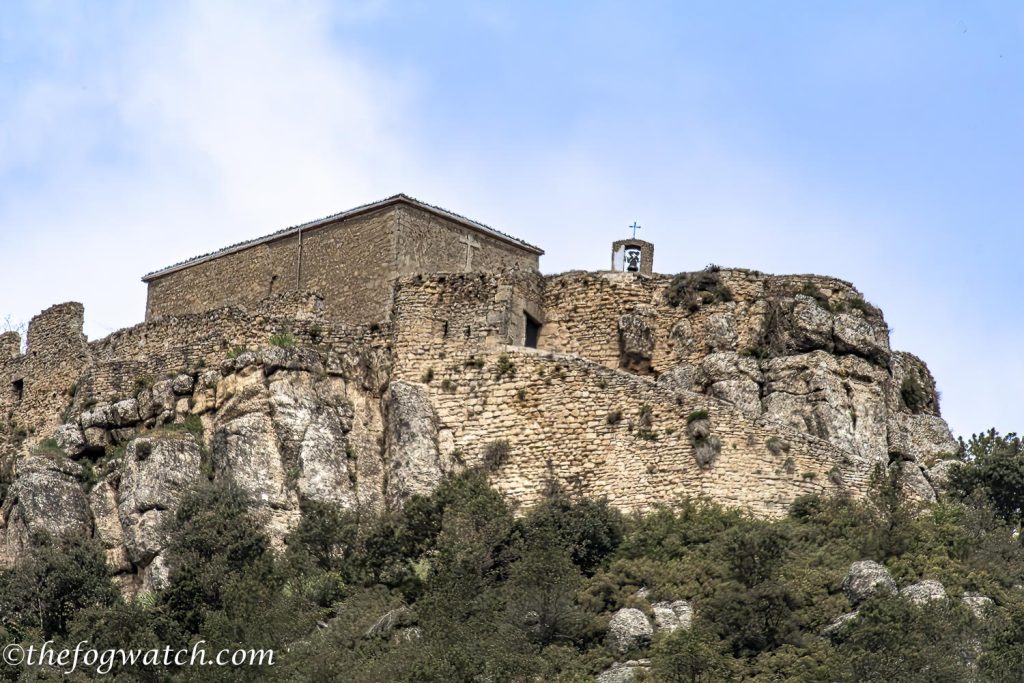
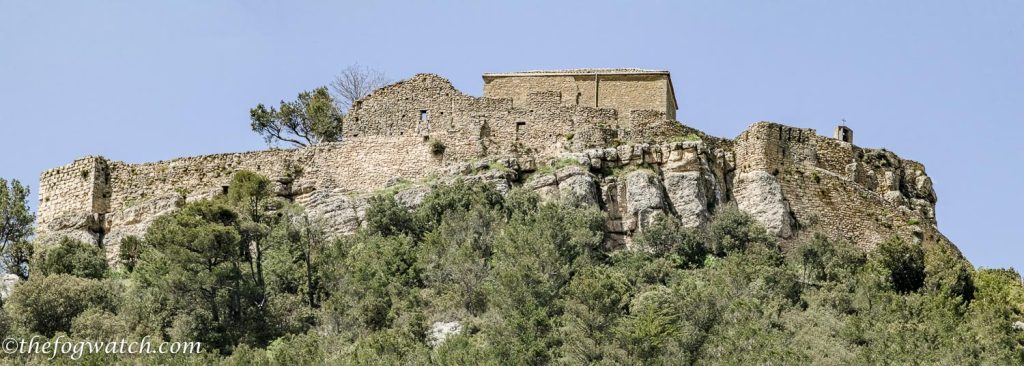
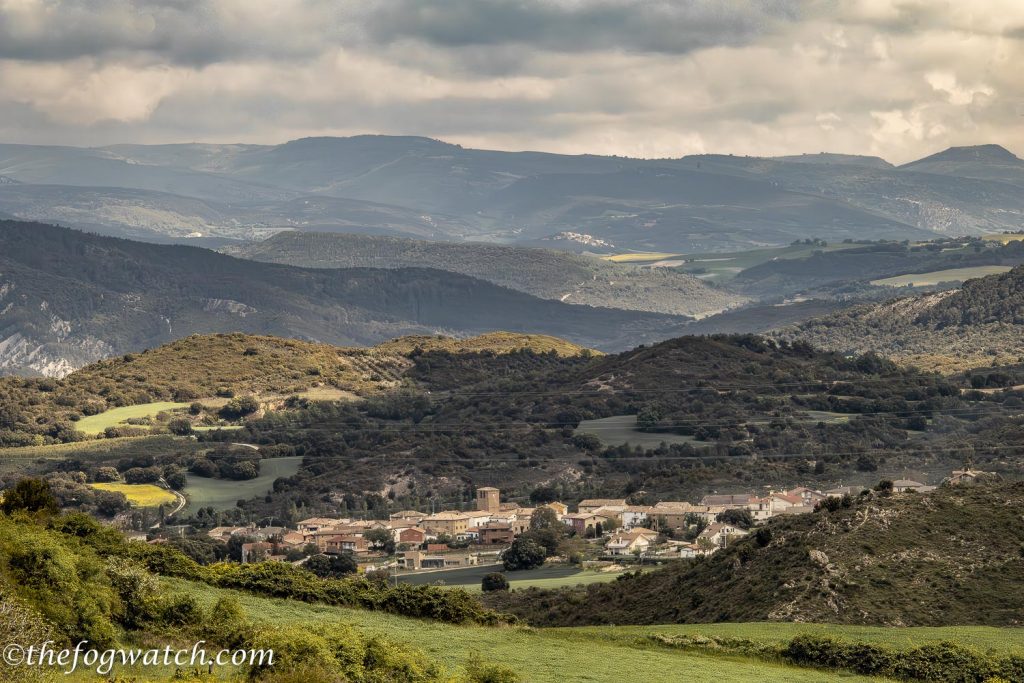
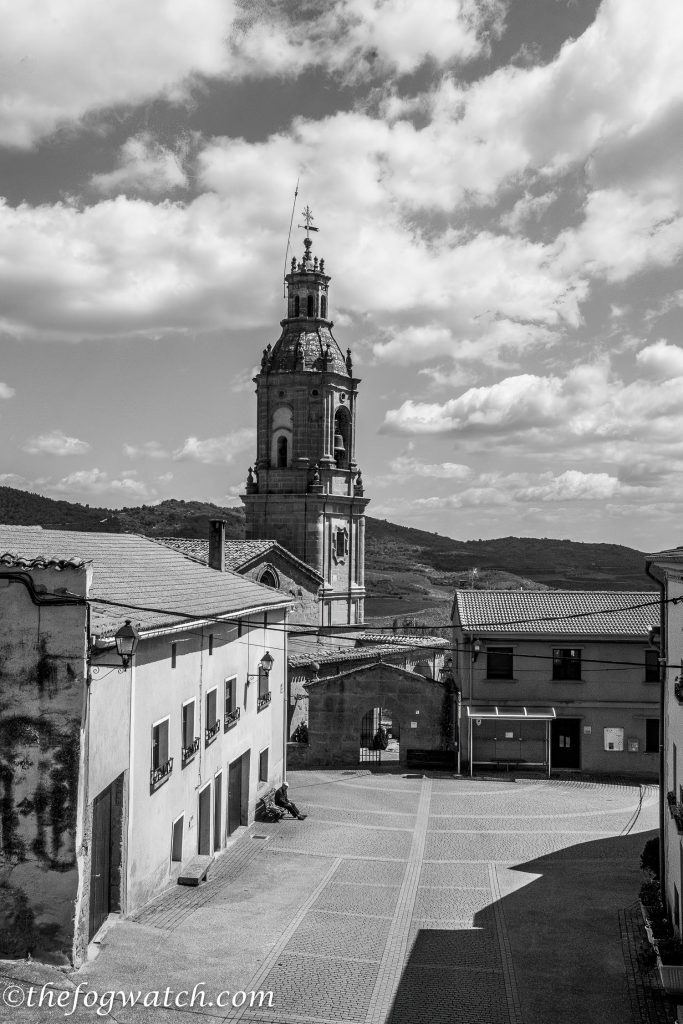
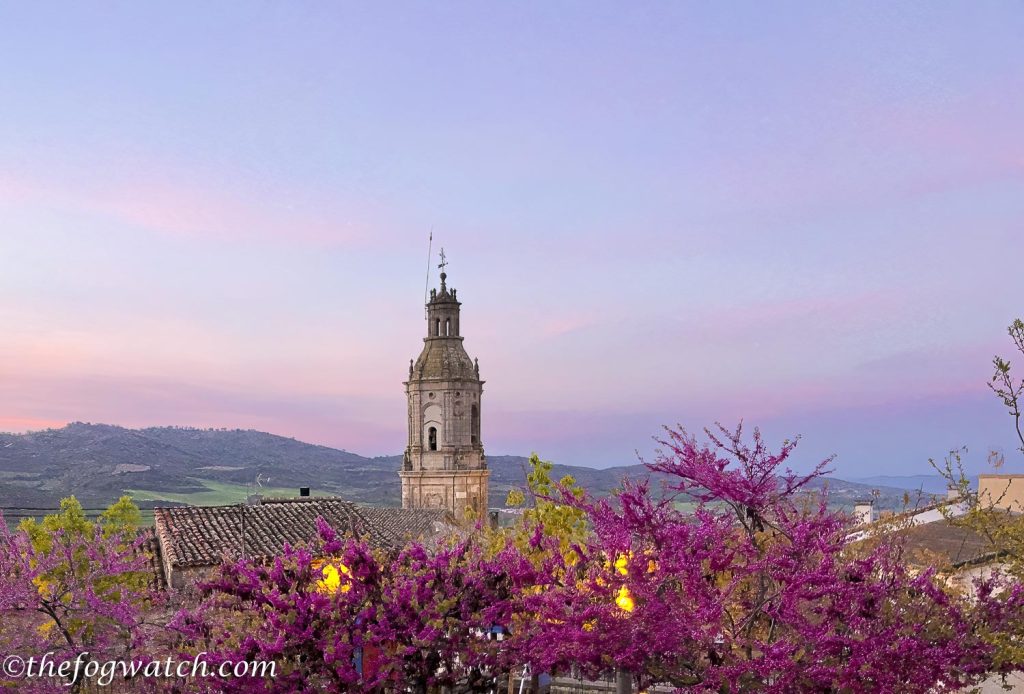
Hello, our time on the Camino overlapped! (I left St. Jean Pied-de-Port on April 20th and got to Santiago on May 27th, 2023.)
Anyway I’m commenting to tell you a funny story about the winery webcam.
I don’t even remember where I got the link–probably a facebook group?, but in the year or so leading up to my Camino I often looked at it–I’m a night owl at home, and midnight, 1am west coast time is mid-morning-ish in Spain–so there’s lots of pilgrims on the webcam!
The day I got to the winery, I pulled out my phone and opened up the groupchat that includes my partner and a few close friends, and posted the link. “Is anyone up? Can you see me??”
Someone on the east coast was in fact awake.
“I SEE YOU!!!” They took some screenshots of me looking at the camera and waving, and sent them to the chat.
I treasure those grainy screenshots, even though I have a much better photo of me actually getting a sip’s worth of wine, taken on my own phone by someone there.
Because those screenshots aren’t me taking a selfie, or another pilgrim taking a photo of me–as much as I love those photos. The screenshots are proof one of my favorite people got to see me *while* I was on my Camino!
Hi April – that’s a wonderful story and a great visual memory to have 🙂 Buen Camino!
Lovely to follow you as I am walking del Norte to Oviedo and then transitioning to Porto for a 2 week less strenuous walk to Santiago
Thanks Brianne – I’m glad you’re enjoying the posts — all the best for your pilgrimage – Buen Camino!
Very good story – and I wish the praying for Sharons knee was successful – then.
Thanks, Anneliese, As it turned out, the knee wasn’t the only issue in the end, but a referred pain. We were respectful of the guy’s intentions and appreciated his sincerity and faith.